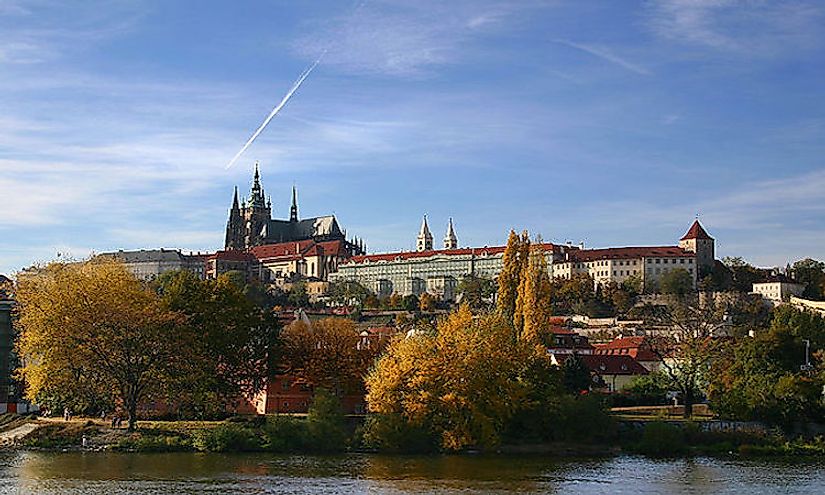What Is The Capital Of The Czech Republic?

Where Is The Czech Republic?
The Czech Republic is a landlocked country in Central Europe. It shares borders with Germany, Slovakia, Poland, and Austria. This country encompasses an area of 30,450 square miles and has a population of 10,553,443.
What Type Of Government Does The Czech Republic Have?
The government of the Czech Republic functions as a representative democracy, which means that an elected public officer represents a large group of the population. The executive branch of the government consists of the President, the Prime Minister, and the Cabinet. The President is the Czech Republic's Head of State and serves a five-year elected term. One of the responsibilities of the President is the appoint the members of the Cabinet and the Prime Minister, the Head of Government. The Parliament of Czech Republic represents its legislative branch and is divided into two bodies: the Chamber of Deputies and the Senate. The Chamber of Deputies encompasses 200 seats, and the Senate has 81.
What Is The Capital Of The Czech Republic And Where Is It Located?
Prague, the largest city in the country, is also the capital of the Czech Republic. This city is located along the banks of the Vltava River in the central northwestern region of the country. It encompasses an area of approximately 192 square miles and has a population of 1,267,449 (over 2.1 million in the entire metropolitan region).
History Of The Capital City Of The Czech Republic
The history of Prague dates back to over a thousand years ago, during the Paleolithic era. The first inhabitants were the Celts, who were later replaced by Germanic tribes. By 6th century AD, Slavic tribes had taken over present-day Prague. In 885, Prince Borivoj I began construction on the Prague Castle, which today is the residence of the President. The city and region came under Roman rule in the late 10th century, when Prague became a diocese. Later, the city became the seat of various dukes and kings. Prague continued to develop over the centuries as an economic, trade, and multicultural center.
During the 14th century, Charles IV ruled the area as both the Holy Roman Emperor and the King of Bohemia. Under his rule, Prague underwent significant development and saw the construction of bridges, universities, and churches. The city flourished until the death of Charles IV brought his son to power. Under the reign of King Wenceslaus IV, the city experienced violence against its Jewish community, attempts at religious reform, and a peasant revolt.
Over the next few centuries, Prague suffered political instability and violent uprisings. In 1618, King Ferdinand II was overthrown, replaced by Frederick V, and in 1620, his army was defeated. This was followed by two more wars in 1631 and 1648 and in 1689, a fire destroyed the city. This fire, although a tragedy, prompted the rebuilding of the city which might have made it a great urban center once again if not for the Plague that hit between 1713 and 1714. After this, the population of Prague began to grow, and the citizens became interested in art and music. The Baroque style became popular during this time.
Czechoslovakia was created after World War I, and Prague was designated as the capital. During World War II, the country came under Nazi German control until the Soviet Army removed the German forces. The city and the country remained under Communist rule until 1989.
Present-Day Role Of The City As The Capital Of The Czech Republic
Today, Prague continues to have an important role as a political and economic center for the Czech Republic. It hosts both the Palace of Prague (the President’s residence) and Parliament. In addition to being the political capital of the country, it is also the administrative capital of two of the Czech Republic’s administrative divisions: the Prague region and the Central Bohemian region.











